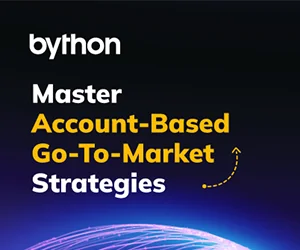The way we pay for goods and services is undergoing a dramatic evolution. From mobile wallets to cryptocurrencies, the payment ecosystem is expanding at an unprecedented rate, bringing with it new opportunities and challenges for businesses across all sectors. For marketing and sales professionals, understanding these changes is not just important—it’s critical for driving growth and staying competitive in an increasingly digital marketplace.
This blog post explores the future of payment systems and their profound implications for marketing and sales strategies. We’ll delve into the latest trends, emerging technologies, and innovative approaches that are reshaping the way consumers interact with brands and make purchases. By the end of this article, you’ll have a comprehensive understanding of how to leverage these changes to enhance your marketing efforts and boost sales in the digital age.
E-Commerce and the Shift to Cashless Payments
The rise of e-commerce has been revolutionary, fundamentally changing the retail landscape and consumer behavior. According to recent statistics, global e-commerce sales are projected to reach $6.3 trillion by 2024, accounting for 21.8% of total retail sales worldwide. This explosive growth has been accompanied by a significant reduction in cash transactions, with many countries witnessing double-digit decreases in cash usage year over year.
This shift to cashless payments has profoundly impacted consumer purchasing behavior. The convenience of digital transactions makes consumers more likely to make impulse purchases and spend more overall. The ease of one-click payments and stored payment information has reduced friction in the buying process, leading to higher conversion rates for online retailers.
For marketers, adapting to this cashless paradigm is crucial. Here are some strategies to consider:
- Optimize for mobile payments: Ensure your website and checkout process are mobile-friendly and support popular digital payment methods.
- Implement seamless payment options: Integrate one-click payment solutions and guest checkout options to reduce cart abandonment.
- Leverage data from digital transactions: Use payment data to gain insights into customer behavior and preferences, informing targeted marketing campaigns.
- Emphasize security: Highlight your secure payment options in marketing materials to build trust with privacy-conscious consumers.
The Rise of Mobile Wallets and Their Marketing Potential
Mobile wallets have become increasingly central to the consumer payment experience. According to a report by Allied Market Research, the global mobile wallet market is expected to reach $7.5 trillion by 2027, growing at a CAGR of 28.2% from 2020 to 2027. This rapid adoption presents a unique opportunity for marketers to engage with consumers in new and innovative ways.
Mobile wallets offer several advantages as a marketing channel:
- Personalized offers: Send targeted promotions directly to a customer’s mobile wallet based on their location and purchase history.
- Enhanced loyalty programs: Integrate loyalty cards into mobile wallets for seamless point accumulation and redemption.
- Improved customer engagement: Use push notifications to remind customers of available offers or nearby store locations.
Several brands have successfully leveraged mobile wallets in their marketing campaigns. For example, Starbucks’ mobile app, which includes a digital wallet feature, has become a cornerstone of their marketing strategy. The app allows customers to order ahead, pay with their phones, and earn rewards, resulting in increased customer loyalty and higher average order values.
( Also Read: What Are Mobile Wallets? )
Buy Now, Pay Later (BNPL): A Game-Changer for Sales Strategies
Buy Now, Pay Later (BNPL) services have emerged as a major payment industry disruptor. These services allow consumers to make purchases and pay for them in installments, often without interest if paid within a specific timeframe. According to Grand View Research, the global BNPL market is expected to grow from $4.1 billion in 2020 to $20.4 billion by 2028.
BNPL is significantly influencing consumer spending habits:
- Increased purchase frequency: Consumers are more likely to make multiple purchases when BNPL options are available.
- Higher average order values: Shoppers spend more per transaction using BNPL services.
- Expanded customer base: BNPL appeals to younger consumers who may not have access to traditional credit cards.
To incorporate BNPL into your sales funnel and increase conversions:
- Highlight BNPL options early in the customer journey to influence purchasing decisions.
- Educate customers about BNPL benefits through clear, concise messaging.
- Offer BNPL for both online and in-store purchases to provide a consistent experience across channels.
- Use BNPL data to inform product recommendations and personalized marketing efforts.
 Digital Wallets and the Evolution of Consumer Payment Preferences
Digital Wallets and the Evolution of Consumer Payment Preferences
The shift from bank cards to digital wallets represents a significant evolution in consumer payment preferences. Digital wallets offer numerous benefits for both consumers and merchants, including enhanced security, faster checkout processes, and the ability to store multiple payment methods in one place.
For marketers, aligning with the growing digital wallet ecosystem is crucial. Consider the following strategies:
- Ensure your business accepts popular digital wallet payment methods (e.g., Apple Pay, Google Pay, Samsung Pay).
- Develop marketing campaigns that highlight the convenience and security of digital wallet payments.
- Create exclusive offers or discounts for customers who use digital wallets to incentivize adoption.
- Use digital wallet data to gain insights into customer behavior and preferences, informing more targeted marketing efforts.
Cross-Border Payments: Opportunities and Challenges for Global Sales
As e-commerce continues to break down geographical barriers, cross-border payments have become increasingly important for businesses looking to expand globally. According to Juniper Research, the cross-border payments market is expected to reach $156 trillion by 2022.
However, cross-border payments also present unique challenges, including currency conversion fees, longer processing times, and regulatory compliance issues. To overcome these challenges and capitalize on the opportunities presented by global markets, consider the following strategies:
- Offer local payment methods in target markets to increase conversion rates.
- Implement dynamic currency conversion to display prices in the customer’s local currency.
- Partner with payment providers that specialize in cross-border transactions to streamline the process.
- Develop marketing campaigns that emphasize your ability to serve international customers seamlessly.
Open Banking and Its Impact on Payment Innovation
Open banking, which allows third-party financial service providers to access consumer banking data through APIs, is driving significant innovation in the payments space. This technology enables the development of new financial products and services, including more personalized payment options and improved financial management tools.
For sales teams, open banking presents opportunities to offer better payment options and enhance the customer experience. Consider the following strategies:
- Explore partnerships with fintech companies to offer innovative payment solutions.
- Leverage open banking data to provide personalized financial advice or product recommendations.
- Develop marketing campaigns that highlight the benefits of open banking-enabled services, such as faster payments or more accurate credit assessments.
The Influence of Central Bank Digital Currencies (CBDCs) on Marketing and Sales
Central Bank Digital Currencies (CBDCs) are poised to have a significant impact on the payment landscape. While still in the early stages of development in many countries, CBDCs could potentially offer faster, more secure, and more cost-effective payment options for both businesses and consumers.
For marketers and sales professionals, staying informed about CBDC developments is crucial. Consider the following implications:
- Prepare for potential changes in payment infrastructure to accommodate CBDCs.
- Develop marketing strategies that highlight your company’s ability to adapt to new payment technologies.
- Consider the potential for micro-transactions enabled by CBDCs and how this could impact your pricing and sales strategies.
Security in Payments: A Critical Factor for Building Trust and Driving Sales
As digital payments become more prevalent, security concerns remain a top priority for consumers. A study by Experian found that 55% of consumers would switch to a company with better security practices, highlighting the importance of robust payment security in driving sales and building customer trust.
To address these concerns and leverage security as a competitive advantage:
- Implement and prominently advertise advanced security measures, such as two-factor authentication and encryption.
- Educate customers about your security practices through marketing materials and during the checkout process.
- Offer fraud protection guarantees to instill confidence in your payment system.
- Regularly update your security protocols and communicate these improvements to customers.
The Role of AI and Machine Learning in Payment Systems
Artificial Intelligence (AI) and Machine Learning (ML) are transforming payment systems, offering enhanced fraud detection, personalized recommendations, and improved customer service. For marketers and sales teams, leveraging these technologies can lead to more effective targeting and increased customer retention.
Consider the following applications of AI and ML in payment systems:
- Use AI-powered chatbots to provide instant customer support for payment-related queries.
- Implement ML algorithms to detect fraudulent transactions in real-time, reducing chargebacks and building customer trust.
- Leverage AI to analyze customer payment data and provide personalized product recommendations or offers.
- Develop marketing campaigns that highlight your use of cutting-edge AI technology to enhance the customer experience.
Big Tech’s Entry into Payment Processing: Implications for Marketers
The entry of big tech companies like Apple, Google, and Amazon into the payment processing space has significant implications for marketers and sales professionals. These platforms are shaping consumer expectations around seamless, integrated payment experiences.
To stay competitive in this landscape:
- Ensure your business accepts payments through major tech platforms (e.g., Apple Pay, Google Pay).
- Develop marketing strategies that emphasize the convenience of using these familiar payment methods.
- Explore partnerships with big tech companies to leverage their payment ecosystems and reach a wider audience.
- Focus on providing value-added services that complement big tech payment solutions, such as personalized customer service or unique loyalty programs.
The Emergence of Super Apps and Their Potential to Transform SMB Sales
Super apps, which offer a wide range of services within a single platform, are gaining traction globally. These apps often include comprehensive payment ecosystems that can drive sales growth for small and medium-sized businesses (SMBs).
To leverage super apps for sales growth:
- Explore opportunities to integrate your business into popular super app platforms in your target markets.
- Develop marketing strategies that highlight your presence on super apps and the convenience it offers to customers.
- Use the data and analytics provided by super apps to inform your marketing and sales strategies.
- Consider creating your own mini-programs or services within existing super apps to expand your reach.
Trends Future in Payment Systems and Their Strategic Implications
As we look to the future, several emerging trends are set to reshape the payment landscape:
- Internet of Things (IoT) payments: Connected devices will enable seamless, automated transactions.
- Blockchain and cryptocurrencies: Decentralized finance (DeFi) could revolutionize cross-border payments and financial services.
- Biometric authentication: Fingerprint, facial recognition, and other biometric methods will enhance security and convenience.
- Voice-activated payments: Smart speakers and virtual assistants will facilitate voice-commanded transactions.
To stay ahead of these trends:
- Invest in research and development to understand and potentially adopt emerging payment technologies.
- Develop flexible payment infrastructure that can adapt to new technologies and consumer preferences.
- Create marketing campaigns that position your brand as an innovator in the payments space.
- Foster partnerships with fintech companies and startups to stay at the forefront of payment innovation.
The Role of Financial Inclusion in Shaping Payment Innovations
Financial inclusion initiatives are driving significant innovations in payment systems, particularly in emerging markets. These efforts aim to provide access to financial services for underserved populations, often leveraging mobile technology and alternative data sources for credit scoring.
For marketers, this trend presents opportunities to reach new customer segments:
- Develop products and services tailored to the needs of financially underserved populations.
- Create marketing campaigns that emphasize the accessibility and inclusivity of your payment options.
- Partner with local organizations or fintech companies specializing in financial inclusion to expand your reach.
- Use success stories and case studies to demonstrate the positive impact of your inclusive payment solutions.
Personalized Payment Experiences: Tailoring Payment Options to Boost Conversions
Personalization is becoming increasingly important in the payments space. Consumers expect tailored experiences that cater to their individual preferences. Businesses can significantly enhance customer satisfaction and drive sales by offering personalized payment options.
To implement personalized payment experiences:
- Use customer data to offer relevant payment methods based on past behavior and preferences.
- Implement dynamic pricing and payment plans that adapt to individual customer profiles.
- Offer customized loyalty programs and rewards tied to specific payment methods or behaviors.
- Develop marketing campaigns that highlight your ability to provide personalized payment experiences.
Final Thoughts
The future of payment systems holds immense potential for marketers and sales professionals who are prepared to adapt and innovate. By staying informed about emerging trends, leveraging new technologies, and focusing on customer-centric payment experiences, businesses can drive growth and maintain a competitive edge in the digital economy.
Key takeaways for success in this evolving landscape include:
- Embrace digital and mobile payment solutions to meet changing consumer preferences.
- Leverage data from payment systems to inform marketing strategies and personalize customer experiences.
- Prioritize security and transparency to build trust with customers.
- Stay agile and open to new payment technologies and platforms as they emerge.
- Focus on creating seamless, omnichannel payment experiences that cater to diverse customer needs.
By keeping these principles in mind and continually adapting to the changing payment landscape, marketers and sales professionals can turn the challenges of this digital transformation into opportunities for growth and success.








